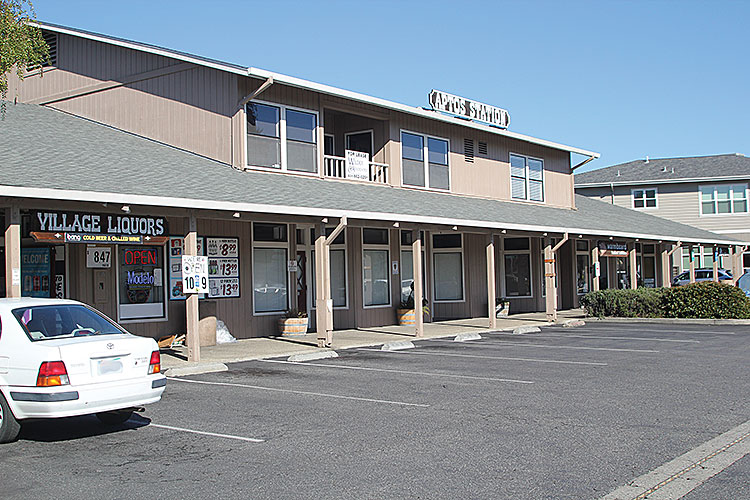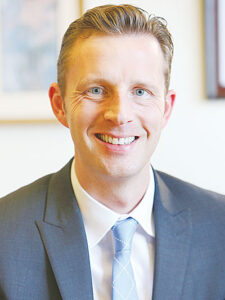By Zach Friend, Supervisor, Second District
Recently, the Board of Supervisors voted to send a proposed sales tax to the voters in the March 5 election. What is the purpose of the proposed tax, how will the revenue be spent and how much will it bring it? Here is an overview.
What will voters be considering?
On the March 5, 2024 ballot, voters will be asked to consider a one-half cent sales tax measure. The funds will go directly to the County (all of the funds stay local) and would be collected on all consumer taxable goods and services.
The County’s sales tax rate of 9% is equal to the lowest rate among the five local jurisdictions (County and Cities of: Watsonville, Scotts Valley, Santa Cruz, and Capitola). With recent successful ballot measures, the Cities of Watsonville and Scotts Valley are both at the statutory cap of 9.75%.
The City of Santa Cruz is currently at 9.25%, and the City of Capitola is equal to the County at 9%.
Voters will consider increasing the current unincorporated rate from 9% to 9.50%.
Why is the new tax being proposed?
The County is unique in that more than half the population lives in the unincorporated area. Places like the San Lorenzo Valley, Live Oak, Aptos, Corralitos, and more rely on the County for traditional municipal services such as road maintenance, law enforcement, parks, and building permits. In reality, the County is the largest “city” in Santa Cruz County.
Simultaneously, the County is responsible for providing countywide services for all residents including public health and safety net support services, district attorney and public defender services, and conducting elections. The County serves a greater proportion of the county population than all our peer counties and higher proportion than the statewide averages.
Over the past several years, natural disasters resulting from climate change, housing affordability driving away essential frontline workers and increasing homelessness, and a challenging economic environment impacting the County’s ability to improve critical infrastructure, like roads and parks, are straining the County’s limited financial resources.
Due to historic state allocation models for public funds, Santa Cruz County only receives about $550 per resident in property and sales taxes. For comparison, Santa Clara County gets almost $11,000 per resident from property tax revenue, as compared to only $463 for Santa Cruz County.
Drilling down on this a bit more, we often receive questions about property taxes (given the high amounts people pay on local assessed value) and how much of your property tax dollar stays locally. Under this Prop. 13 formula, the County of Santa Cruz retains some of the lowest amounts of property taxes of any other County in the state. Only 13% of your property tax dollars end up back with County government to fund our local services.
As mentioned above, approximately 50% of residents live in the unincorporated county (compared to about 4.5% or so in Santa Clara County).
This low recovery amount has significant impacts on how the County provides services.
As you can imagine, counties that are able to retain higher amounts under their Prop. 13 formula have more money available for roads and services without needing new funding streams to backfill these needs. If the Prop. 13 formula were to change in the state at some point in the future, unincorporated residents could see significant improvements to services and infrastructure without increased taxes – by simply having more of your local property tax dollars stay with local County government.
As Prop. 13 was approved by voters as a state constitutional amendment, any changes to the formulation and distribution cannot occur at the local level.
In the meantime, local governments with challenging tax distributions like this often turn to local sales tax measures as they have complete local control over the funds and it’s a relatively stable income source for providing services.
How would the tax revenue be spent?
As part of the approval for the item going before the voters, the Board of Supervisors adopted a spending framework for how the tax revenue would be spent. Here is an overview:
Housing and Essential Workforce Retention ($1 million) — Address the acute housing crisis, ensuring frontline workers can afford to live in the community, with funds to support housing plans and predevelopment costs on County campuses and other potential housing sites.
Countywide Homeless Services ($1 million) — Tackle homelessness with a focus on year-round, 24-hour navigation centers and other services distributed across Santa Cruz, Watsonville, and unincorporated areas.
Climate Resiliency and County Parks ($1 million) — Enhance the County’s response to climate change with funds for wildfire, flood and emergency response, prevention programs, and disaster recovery services. Additionally, support maintaining and improving neighborhood parks.
Road Repair and Infrastructure Projects ($1 million) — Address pressing infrastructure needs, including street repairs, potholes, and failing public facilities, to ensure safe and efficient transportation networks and government service centers.
Other Essential County Services — Address current challenges and emerging community needs, including mental health services for children and vulnerable populations, and invest in improved public safety.
How much would the tax bring into the County?
If approved, the half-cent sales tax is estimated to generate $10 million annually. In the first year, it’s estimated to generate approximately $7.5 million.
•••
As always, you are welcome to call me at 454-2200 with any questions on this or any other County-related issue. I am also maintaining regular updates on social media via Facebook at www.facebook.com/supervisorfriend.
For more on this measure, read “County to Ask Voters for Sales Tax Hike“




